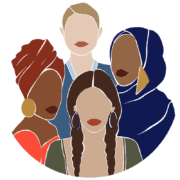[et_pb_section fb_built=”1″ admin_label=”section” _builder_version=”3.22.3″][et_pb_row admin_label=”row” _builder_version=”3.22.3″ background_size=”initial” background_position=”top_left” background_repeat=”repeat”][et_pb_column type=”4_4″ _builder_version=”3.0.47″][et_pb_text admin_label=”Text” _builder_version=”3.0.74″ background_size=”initial” background_position=”top_left” background_repeat=”repeat”]
![]()
#TechTalk is our Girls in Tech Singapore Program which aims to future proof our community by bringing essential career in tech skills in the form of workshops, trainings, hackathons – all together with our corporate partners.
About The Author
Setia Wardhani is a first (but not last ) time Girls in Tech Singapore volunteer, who has in recent years been active in the Indonesia chapter of Girls in Tech chapter in Jakarta. She has relocated to Singapore and is working as a Customer Experience (CX) consultant at Oracle, supporting company digital transformation and reducing their total IT cost. She is also very passionate about Human-Centred Design and was kind enough to join the workshop as one of the day facilitators. For those of you unable to join, Setia has written up some of her high-lights from the event.
What a great way to spend our Saturday hosting a Human-Centered Design Workshop at imPAct@Hong Lim Green with a group of amazing women from Boston Consulting Group (BCG)’s DigitalBCG and Girls in Tech, Singapore. Shout out to the all-female team of organizers Soo Kyung “Sooky” Bae, Ummi Jameel, Hui-Ning Tan, Hayley Bakker and group facilitators of the day Pei Ting Chan, Naomi Tay, Yuk-lin Ong. The objective of the workshop was to teach participants the foundation of the Human-Centred Design methodology while applying some of the selected tools to a very relevant and engaging case study.
How And Why It All Started: Ethical E-Commerce
According to Visa, 70 per cent of people in Southeast Asia report shopping online at least once a month. Within SE-Asia, this is worth more than US $100 Billion with no sign of slowing down. However with all the convenience provided by online shopping it comes with environmental challenges; excessive packaging, carbon footprint, unethical sourcing (not knowing where the items are from). In the middle of all the online shopping and constant waste, there are a growing group of consumers that prefer to shop ethically and consumers who just want to switch it up.
So the problem statement for this workshop was: “How might we create a more ethical B2C e-commerce process?” The workshop ran utilizing Human Centred Design methodologies. There was a huge variety of participants coming from various backgrounds, such as students, IT consultant, ladies working in beauty industry, banking, commerce, data scientists and so on. They had different levels of experience with design thinking. Some have attended design thinking workshop and are HCD practitioner, while most are new to the concept.
The Workshop Rundown: From Problem to Pitch
The workshop started by leading facilitators explaining the Human Centre Design approach, introducing the problem statement and research. We were familiarised with HCD tools and insights such as interviewing personas, building HMW (how might we) statements, ideation techniques and creating concept cards for the final pitch.
We approached the Ethical e-commerce topic from three different perspectives: Environmental impact, Social impact and Animal welfare.
Environmental impact meant things like packaging waste and carbon footprints. There is too much plastic waste from the delivered goods. It is difficult to find if the packaging is recyclable before making the purchase.
Social impact covered things like being able to purchase locally, fair wages and human values. It is often difficult to find the source of the item such as where and who it is produced by before making the purchase.
Animal welfare covered animal testing and if animals were involved, they were treated fairly and humanely. This was especially relevant considering that a lot of reputable makeup brands are trying to create vegan makeup, knowing that a good percentage of their markets are keen on making a switch.
The Results
In just 6 hours a group of brilliant and very diverse minds generated and presented ideas such as
- Rewards program for customers that buy from green retailers
- Packaged goods with QR codes informing consumers on how to re-purpose the packaging
- App that allowed users to check if products had fit certain ethical and environmental standards
- A community that endorses socially ethical goods with its guaranteed label
At the end of the workshop everyone walked away with ideas on how they could have applied Human Centred Design into their past projects and how they would incorporate this methodology in their future work. We invited the participants to share their experiences using (or not using using) HCD in their work life, and this was a valuable learning for everyone!
We definitely left the workshop with a sense that placing the human first and involving the user in a design process in (almost) any experience can make the outcome/ business more worthwhile.
We look forward to meet you at our #TechTalk or other events in the future!
[/et_pb_text][/et_pb_column][/et_pb_row][/et_pb_section]



